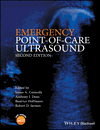Suprapubic Aspiration and Catheterisation
Summary
Suprapubic urinary bladder aspiration is a common urologic procedure, but is infrequently performed in the emergency and critical care setting. With ultrasound guidance, suprapubic aspiration is safe, with very low complication rates. The suprapubic approach has a lower risk of bacterial contamination of the bladder than urethral catheterisation. There are two primary indications for suprapubic bladder aspiration: relief of urinary retention; and collection of a sterile urine sample for culture. Suprapubic needle aspiration is the 'gold standard' method for obtaining a sterile urine sample. The technique is mostly used in infancy and early childhood, but is occasionally necessary in adults and the elderly. The primary goal of ultrasound guidance is to confirm that there is actually urine in the bladder and to determine a puncture site that gives direct access to the bladder, particularly avoiding the bowel.



